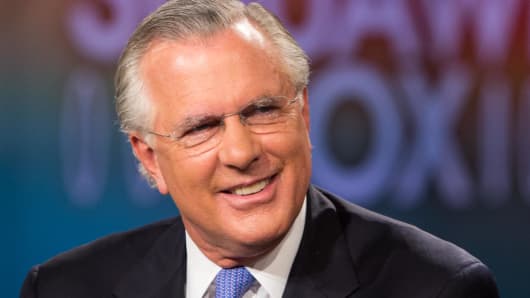The Institute for Supply Management said on Monday, for example, its services index rose to 56 from 52.2 in June, easily topping economists' expectations for 53. A reading above 50 indicates expansion in the sector.
Meantime, the four-week average of new claims for state jobless benefits dropped to 335,500, the Labor Department said on Thursday. The reading has not been that low since November 2007, just before the United States fell into a calamitous recession.
"If things go as the committee expected, then I would expect us to dial back," Fisher said. "We'll have to see what the data and the feeling is between now and the time we next meet in September."
Before then, the Fed will digest the September jobs report. With the unemployment rate currently at 7.4 percent, Fed Chairman Ben Bernanke's 6.5 percent unemployment target is still a long ways off.
But Fisher noted that the Fed has two things at play: bond-buying and low interest rates.
Bond purchases, Fisher said, could begin to "dial back" when unemployment begins to near 7 percent.
Fisher echoed comments from other Fed officials regarding interest rates, saying that so long as inflation stays low, the Fed will not consider raising interest rates until the jobless rate drops to 6.5 percent. The base rate or Fed funds rate, which anchors the yield curve, will likely remain low "for a very long timeframe."
—By CNBC's Drew Sandholm. Follow him on Twitter @DrewSandholm
—Reuters contributed to this report





